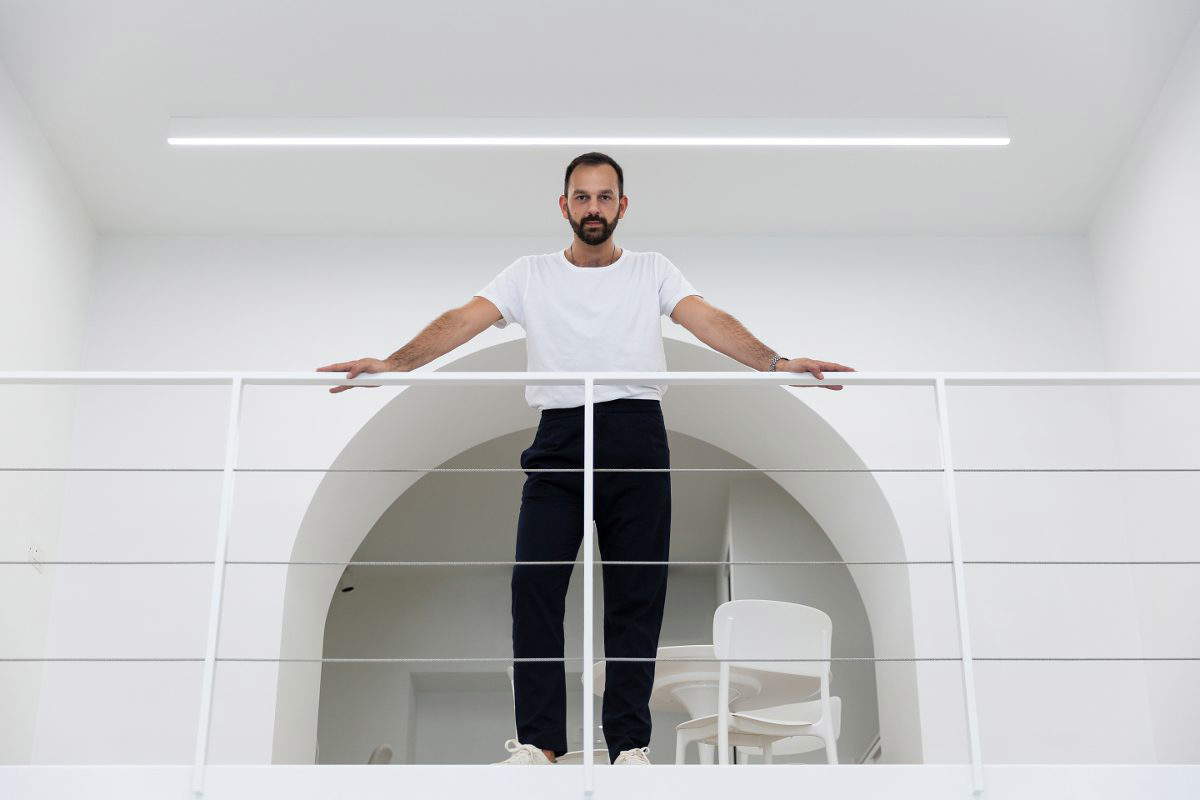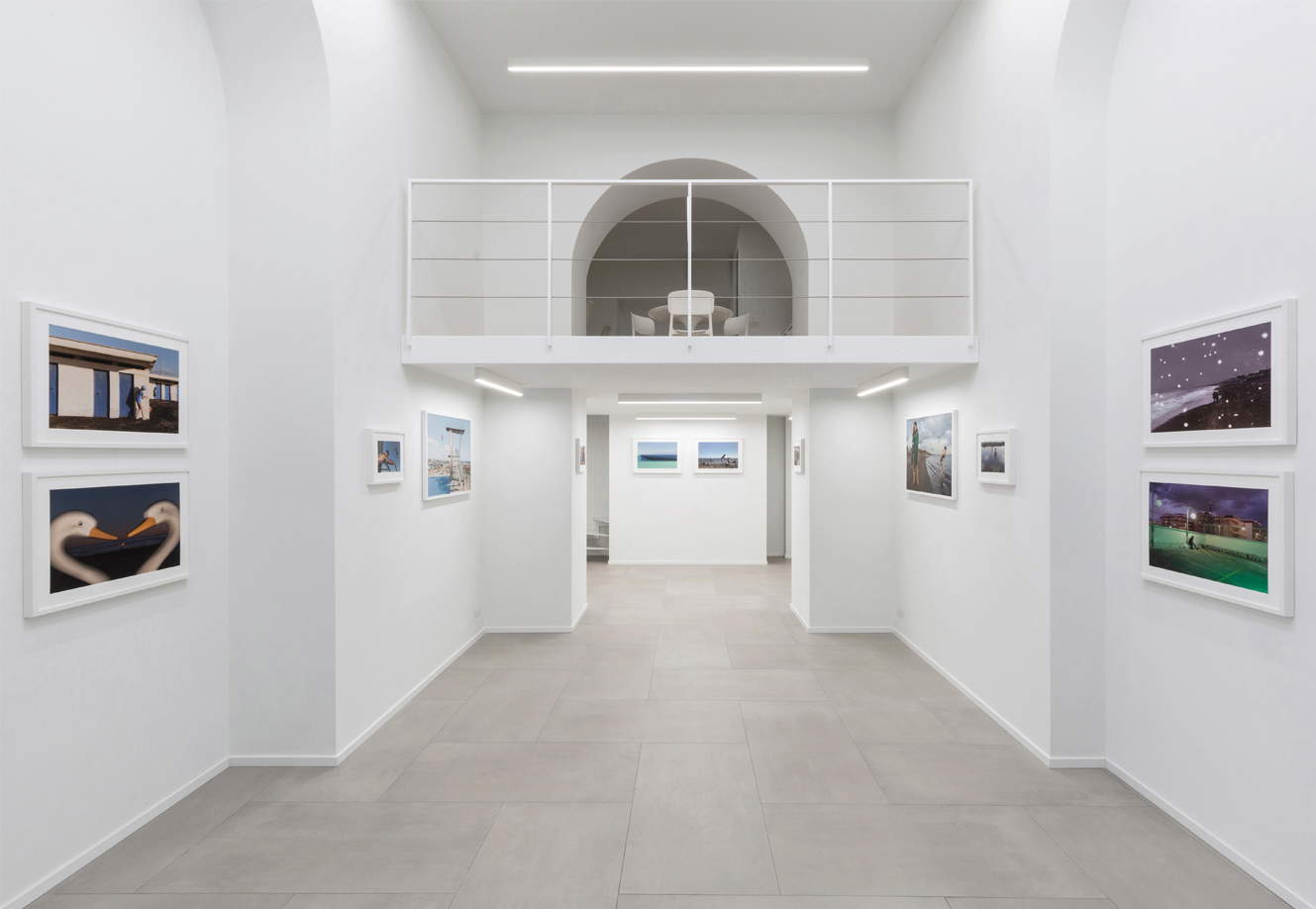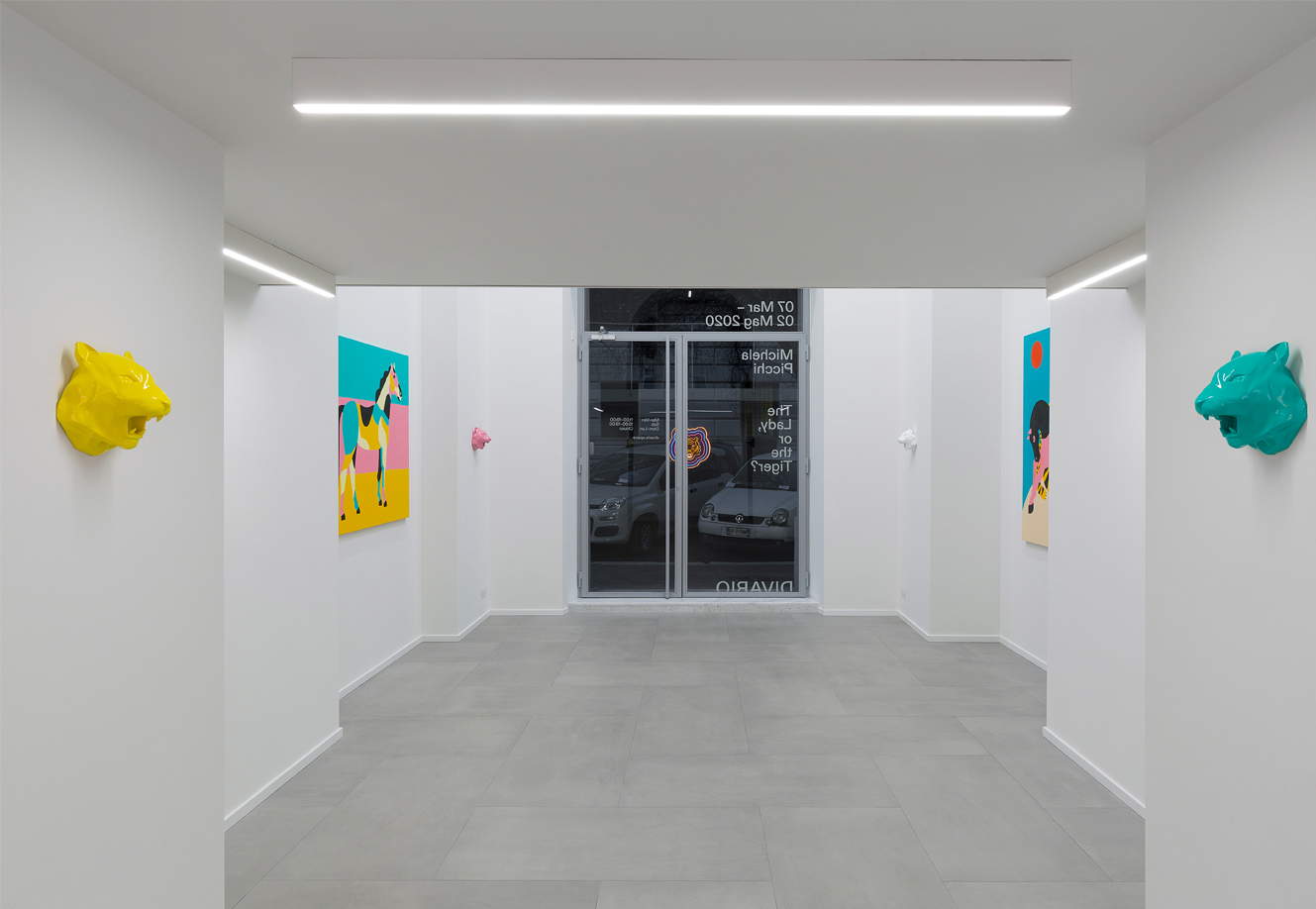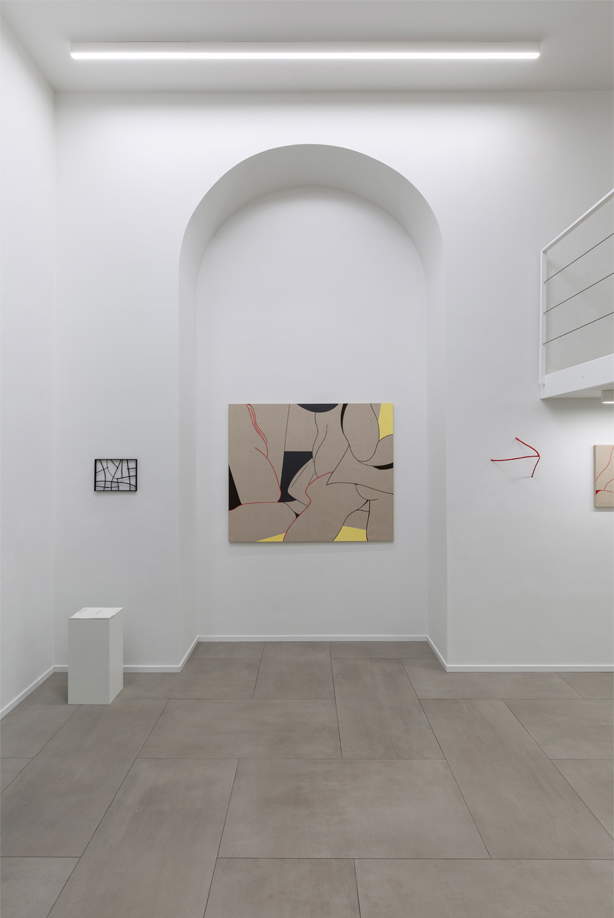After just five years of existence, the Divario gallery in Rome has closed. It had been founded in 2019 by entrepreneur Filippo Tranquilli and over the years had stood out for a refined proposal, centered particularly on photography, with mostly young names. Starting with an exhibition by Simone Bossi, it had then been joined by exhibitions by Robocoop, Michela Picchi, Marta Abbott, Lorenzo Catena and Valeria Tofanelli, Ovidiu Leuce, Renzogallo, Max Renkel, Leonardo Magrelli, and Giulio Bensasson until the final exhibition, finished in spring 2024, by Francesca Cornacchini. The causes of the closure? According to Tranquilli, the traditional business model of galleries, that is, spaces that have both a commercial and a cultural function together, is in crisis, and then it becomes difficult to work with young people, to cultivate new talent, the public is much less present than it used to be. But several others are the problems: in this interview, Filippo Tranquilli discusses them with Luca Rossi.

LR. You recently made the decision to close Divario Gallery in Rome, which was doing valuable and quality work on contemporary art. What were the difficulties that led you to this choice?
FT. Dear Luca, As you can imagine, the decision to close Divario was a thoughtful and at the same time very painful choice. A little grief for me to process and perhaps another defeat for the system to digest. I personally do not think it was a failure, far from it. In my own small way, I think I was successful and accomplished a lot. Regardless of how things turned out I think it was an unforgettable experience, a privilege that I enjoyed to the fullest. As entrepreneur Seth Godin wrote in his book The Dead End: “A job, a project, a relationship: everything, at first, constitutes an exciting experience. Then the first obstacles take over and, finally, comes the most difficult phase. The one where you no longer enjoy yourself and just have to grit your teeth. At that point you wonder if it is really worth it.” When you invest all your time, part of your money and a lot of your energy in an entrepreneurial project like mine and, at a certain point, the bitter realization arises that all our efforts to get to economic self-sufficiency are useless, you can’t do otherwise, you have to close down.
How did the decision mature?
After five years of operation, I realized that the business model of the art gallery understood as we usually imagine it, that is, as an exhibition space that combines a commercial function with a cultural function, is severely deficient. It is unsustainable both from an economic point of view, because it entails many burdens that are not offset by sufficient income, especially if you work with young artists and do not want to shoot unreasonable prices, and from a human point of view, because the art world has become hopelessly spoiled, incredibly classist, lazy and superficial. If you are a gallery doing the gallery’s job, which is to look for talent with a curator/museum approach, the market does not reward you. Also, from the point of view of public participation, art galleries are less and less experienced or traversed, and this is a reality I have witnessed firsthand. More often than not, one spends the days in wearisome waiting for a visitor or hoping for a sale. Of course, before making this decision I talked to other gallery owners, some curators and a few collectors; I talked to directors of museums, foundations and fairs; I consulted art dealers and art advisors. Everyone sees and knows the problem but no one knows concretely what to do to reverse this terrible trend. No one has a magic wand. I have been told: you should do more fairs, especially go abroad; you should get in the right business, attend the important salons; you should invest more, have a lot more money; you should build a solid reputation, leverage your family’s entrepreneurial image; you should hold an award, perhaps in your own name; you should hold dinners to pamper and please collectors; you should have a significant second income to support all expenses; you should attend the events that matter, have the right contacts; you should not work with emerging artists, if anything implement the second market; you should invite important critics and work with influential curators; you should fund external events and collaborate with institutions; you should participate in festivals and biennials; you should produce catalogs, make multiples and implement online sales; I could go on and on but I don’t want to bore you. I did a lot of what was suggested to me without ever neglecting the quality of my offerings, keeping high what I think should be the standards of a gallery, but I was alone in having to handle all this “workload” that, in my opinion, has nothing to do with buying a work of art. A young gallery cannot, materially, do everything that the system expects of it. When I decided to open Divario everyone in the industry, from the very beginning, treated me as if I were a poor fool, naive. Some even tried to warn me off. But I am no fool; I had my “chances.” Eventually I got the idea that today, in Italy, it is practically impossible for a research and experimental space to emerge, grow, self-define and be self-sufficient without self-financing and having its back very much covered. I am still waiting for someone to disprove this idea.



Both in Italy and abroad, in big cities, galleries are looking for collaborative ways. Have you encountered problems with collaboration between different galleries in the Roman scene?
I cannot fully answer this question because I have not collaborated with other galleries in my area and I cannot even speak for the whole Roman scene. With some gallerists there has been some dialogue, especially with the younger ones, but nothing in depth. There has been more dialogue with gallerists in other cities like Miilano, Turin, Bologna, and Palermo. Maybe in Rome it is difficult because of the territorial conflict, because of competition issues, to understand. However, I always perceived a lot of secrecy from all my colleagues, not only from those in Rome. Very few have been open and honest talking about the real health of their business. I can also understand this difficulty in being transparent or at least forthright, for some it is a way to protect their own interests but, in my opinion, in order to collaborate you have to have open confrontation, there has to be constructive dialogue, you have to have a common goal. There has to be a real intention of collaboration to get out of the ditch we have been in for decades now. To give you an example, two years ago the Roman contemporary art galleries promoted a cultural initiative to enhance the art scene that characterizes the city, Rome Gallery Weekend, but Divario was not invited. No one contacted me, so I could not take part. I found out after the fact. Maybe it was a slight, maybe it could have been remedied, but it was not my place to fix it. Anyway, I participated as a visitor and in the end I encountered so many problems from the standpoint of organization, management, logistics and communication that not being there, the following year, was my choice. Doing a two-day event where more than 30 galleries, including majors, open an exhibition or event in their own venue, in a municipality with our geographic extent, is a losing bet from the start. Bringing all the galleries in the area together by each staying at home for me doesn’t make sense and we didn’t need it, Rome Art Week was enough. Basically I don’t think that kind of initiative could have changed the fortunes of Divario in any way. The problems that a young gallery owner faces every day in order to survive in this industry are endemic and cannot be solved in a weekend. In Rome I felt a strong isolation, however, it seemed to me that everyone was isolated, each in his own way and for different reasons.
Some collectors argue that the new generations are merely elaborating derivative languages and codes from the last century. Have you encountered this in your experience?
First of all one would have to know who these collectors are, what they are looking at and especially in what direction they are looking. Maybe they are looking at the wrong thing in the wrong place. Maybe they are looking for something new in the usual places. Certainly, I speak from personal experience, some of them think that the latest generations of artists are just, let’s face it, “copying” the great masters of the past. Some collectors even think they are not original enough to deserve their attention, and maybe they are right. Maybe some young artists thought that by pandering to the tastes of the old guard they would have a better chance of success in the market. On the other hand, it is collectors who finance artists through the purchase of their works. All plausible. But I refuse to take all young people active in the contemporary scene and make a single bundle of them. I refuse to think that they are all behaving the same way or following the same approach. They are not. In the various years of research for my gallery I have attentively looked at the work of about fifty Italian artists of the latest generations, some super-acerbic, some more mature, and in none of them have I ever found this voluntary tendency to emulate. One should talk about some artists, not all. One should exclude those who do not fit our research criteria and promote those who, in our opinion, have taken the right path. To make a selection. One should have a clear vision of what one is looking for. Also, about “reworking derivative codes and languages from the last century” I don’t see anything wrong with that. But then why only from the last century? As far as I am concerned, artists could go so far as to rework even Hammurabi’s Code if that operation led to something original. Over the years of studying and practicing the profession, I have learned that “references” are very important and that from the reworking of a form or concept from the past can come something new and very relevant to the present. The new is not something that never existed; it belongs to the recent past or the near future. Perhaps the collectors you speak of are looking for an invention, something that does not yet exist.
Is there perhaps a surrendering attitude on the part of artists of recent generations?
Artists of recent generations have not surrendered, they are simply hostages to a highly compromised system. In my experience as a gallery owner, I have found that few of them like to attend all the events and all the openings, to please the collectors, curators and so on; to be their own PR, in essence. Most of them would gladly do without. But they suffer the pressure and the consequences of a flawed, entangled system, founded on friendship and familism, which gives them very few career opportunities. Some of them, even the most unsuspected, in order to make a living and finance their art work a second job. In the long run this system wears you down, consumes you, steals time from your real work. How do they rebel? A prisoner may try to escape, but if you wear him down, where will he ever get to? For an artist to have a gallery that represents him or her means having someone who knows you and believes in your work, who understands and appreciates you, who promotes and helps you, who sells for you and does public relations, so that you can spend more time in the studio and develop your artistic language, improve. If the research and experimental galleries close, who can the artists rely on? Only to themselves.
Warning: the translation into English of the original Italian article was created using automatic tools. We undertake to review all articles, but we do not guarantee the total absence of inaccuracies in the translation due to the program. You can find the original by clicking on the ITA button. If you find any mistake,please contact us.